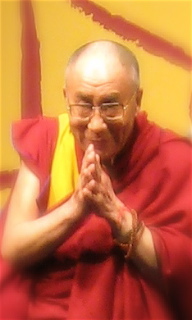
Some notes on the spiritual branding of the principles of His Holiness, the Dalai Lama — and what that means for business, brand development and human capital in culture.
Firms of Endearment.
I’ve spent the last couple of days walking around the edge of the wide perimeter of mind of His Holiness, the 14th Dalai Lama http://www.seedsofcompassion.net.
Project notes are at: http://blog.girvin.com/?p=576
It’s been a two fold path – one, it’s all being about the sheer blessing of being in contact with a person of such spectacular exposure and experience, a human of deeply held spirituality — and two, it’s about listening and trying to, progressively, think about degrees of application. Where?
To my life, to the life of my business, to apply the spirit of the man, to the brand. That’s not me, it’s him. His Holiness, as everyone calls him. Actually, I find that kind of fascinating, that so many refer to him so completely reverentially. Beauty full, really, seeing that respect from Americans.
It’s very un-American, to be spiritually respectful. We, collectively, actually like to think of spirituality as a kind of learned commodity — it’s nice to have, but…whatever. Americans don’t get it. For the most part. That kind of supercilious character is merely arrogance — and Americans, finally, are beginning to learn about quelling that pathetic (look that word up) behavior. In traveling the world, exploring the spiritual dimensions of other cultures, it does take a kind of commitment to link in to them. Be modest, be quiet in your listening, be acquiescent, be restrained, be apologetic.
Lean in.
That is, to hear more, learn more, understand more, you’ve got to get on the ground, kneel, bow down, listen — head to earth. Americans are terrible at that kind of ingratiation. But they seem to be learning.
Why? Because we are such a failed expression in global connectivity — we’re the worst link in the worldwide networks. We’re surely necessary — us: U.S., but we’re the kind of hinge that’s so squeaky that you (the world community) know it’s (we’re) there (all the time); and yes — you need it (U.S.) — but it’s incredibly annoying. Not always the case, but in my worldly examinations, I find that again and again, I’m questioned on — “how could I be an American?” Or, more commonly, “how could I have voted for..?,” “What’s the matter with you(r) people, anyway?”
Where’s my compassion?
Back at it. The opening steps:
When I first met with Dan Kranzler and Peggy Dickens (who’d directed Dan to me), it was about how to help in the thinking of the planning applications of the branding of an event that might, or might not, center around HHDL. Over a couple of days. It was a team effort — a collaborative enterprise. The Brandquest® workshop process is all about collusion and adhesion — working together to sort ideas, innovate direction, spark new ideas and glue them together — team built — that will be about exploring brand personality and dimensionality for this extraordinary encounter. Brands, whether they are about products, teams, services or new cultural directions, are all about humanity. The human brand. If one simply thinks about the metaphor of fire — the campfire, as a place of gathering and storytelling, the real etymological link becomes clear and refined in the visionary eye.
What happened in today’s Seeds of Compassion session, in exploring, was a grouping of Northwest executives — company founders, like Howard Behar, an early principled Principal — Starbucks: http://www.bizjournals.com/ and Jeffrey Brotman, innovator, United Way Millionaire ringleader, founder of Costco: http://www.washington.edu/. Nice people, both of them.
Each of them talked about the concepts of compassionate relationships internally, to their cultures, and extrinsically, to their customer communities. Each of them, and the others in the mix of discussions, had contributions to make about caring, giving back, supporting, listening, being with their teams, supporting them. Loving them. Yes, loving them. And defining the paths that lead to the warmth and compassionate (pain empathic) character of their “brands”. Brands are entirely human. Simple – it’s where they come from. Brands are human-made.
I’ve said that too much, perhaps:
https://www.girvin.com/blog/ted-2008-aspen-2-what-is-life/
https://www.girvin.com/blog/martin-lindstrom/
https://www.girvin.com/blog/the-oed-brandish-brand-as-fire/
https://www.girvin.com/blog/finding-the-heart-and-soul-of-starbucks/
But I keep going…
His Holiness refers to a string of lessons in story, in varying gestures — and he does a lot of that: gesturing:
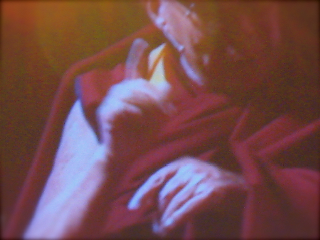
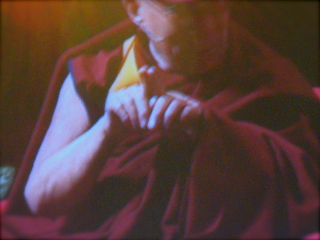
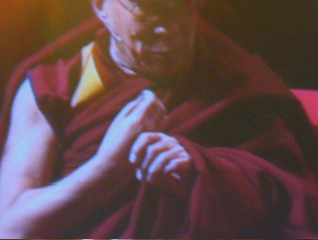
His Holiness uses his hands to get his ideas out — and even if he’s silent, the messages come across. Like a conductor, they are orchestrations of ideas. They are — about the brand — the compassionate business propositions:
That it’s about:
• concepts of trust — in community, close and far, trusting human and reflective values.
• truth and authenticity — the stories come from the heart.
• the definitions of value — are always about the earnings that come from, and are given to, the heart.
• honesty and truthfulness — these are sustaining and long term assets, that will be reflected back to the giver, the receiver, endlessly.
• being clear is challenging — but clarity is sincerity — and truth fullness — in action.
• there is the path of godliness — being connected to a worshipful attitude towards spiritual presence
• and, inversely, there is the path of conviction — not contrary to the spiritual path, since he refers to this as a kind of “enthusiasm”, which is, of course, the indwelling of divinity — ideas are embraced in convicted enthusiastic character. Sharing, and holding, are infectious.
So this is about the spiritual brand — it’s a new age, the population is maturing; there’s more to living than money|money|money — it’s about more, holistically advancing the meaning of your life. And seeking more in jobs and relationships; it’s about finding balance. Allowing the selective embrace. Even Chris Anderson (Wired) is referencing this proposition — the Long Tail is about finding the delicately sliced connections in community; it’s not the big flabby mass, but multiples of communities.
The point to all of these observations are about the spirit of the brand, the brand spirit — and that, in the teaching and sharing of His Holiness, the 14th Dalai Lama — and what that humanity, the warmth, that connection between the one and the other, the compassionate being, is going to remake the business — beauty, newly found.
Something new:
to see:
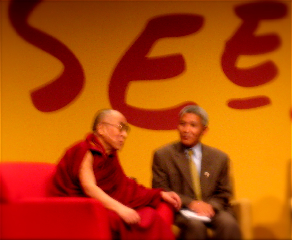
And the Seeds, scene —
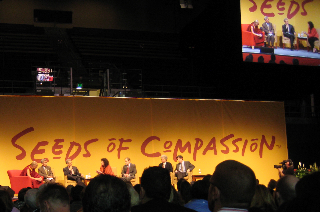
Times are changing — when thousands of business people are willing to take the time to explore something other than the newest Business 2.0 strategic modeling — and to listen for a couple of hours to the mystically discovered representative of an obscure order of Tibetan monks, now — a global leader and force of nature, it’s something.
Some thing — remarkable.
What’s your take? Did you go? What do you embrace?
tsg
—-
GIRVIN
New York City + Seattle | Tokyo
see the new https://www.girvin.com
Exploring creative integrations:
https://tim.girvin.com/
D.logs:
http://blog.girvin.com/
https://tim.girvin.com/index.php